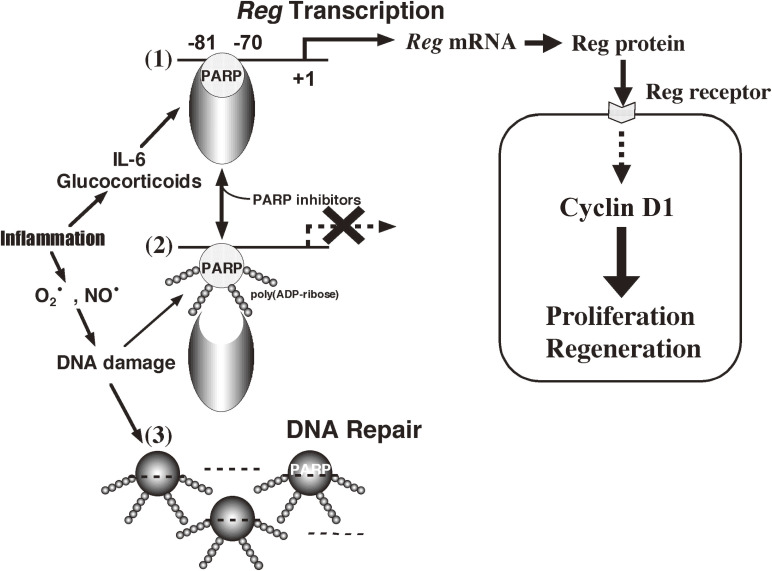Figure 17.
Roles of PARP in the Reg gene transcription and DNA repair (adapted from Ref. 166; see also Ref. 96). β-cells are affected by many agents such as immunological abnormalities, virus infections, irradiation, and chemical substances (see also Fig. 5), leading to local inflammation in and/or around pancreatic islets. (1) Inflammatory mediators such as IL-6 and glucocorticoids are produced in the inflammation process. IL-6/glucocorticoid stimulation induces the formation of an active transcriptional complex for Reg, in which PARP is involved, and when PARP is not auto-poly(ADP-ribosyl)ated in the presence of PARP inhibitors, the transcriptional complex is stabilized and the Reg gene transcription is maintained. (2) DNA damaging substances such as superoxide (O2•) and nitric oxide (NO•) are frequently produced in inflammatory processes. When the DNA is damaged, PARP senses DNA nicks and auto-poly(ADP-ribosyl)ates itself for the DNA repair. Once PARP is self-poly(ADP-ribosyl)ated, the formation of the Reg gene transcriptional complex is inhibited, interfering with the interaction between PARP and other nuclear proteins necessary for the active complex, and, therefore, the transcription of Reg gene stops. (3) When DNA is massively damaged, PARP is rapidly activated to repair the DNA2,36) and the complex for Reg gene transcription is not formed at all.

